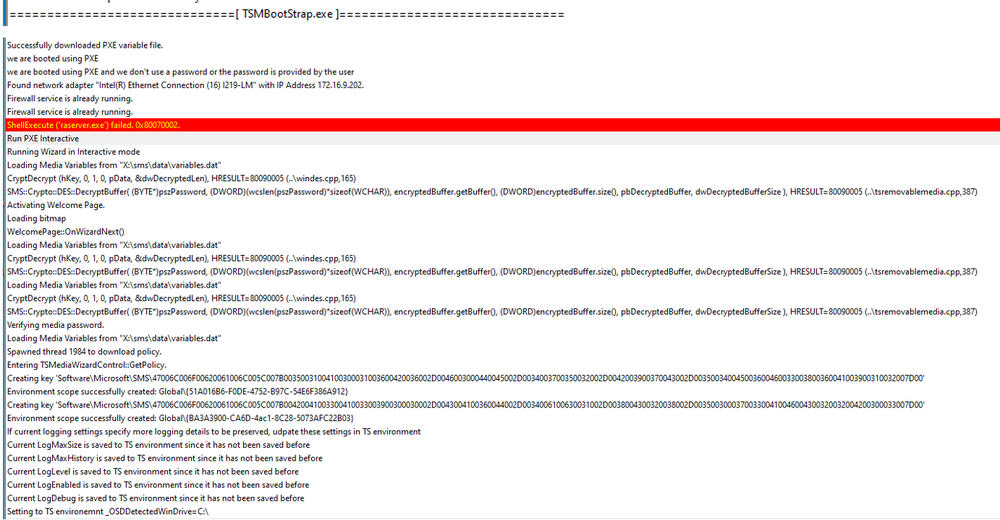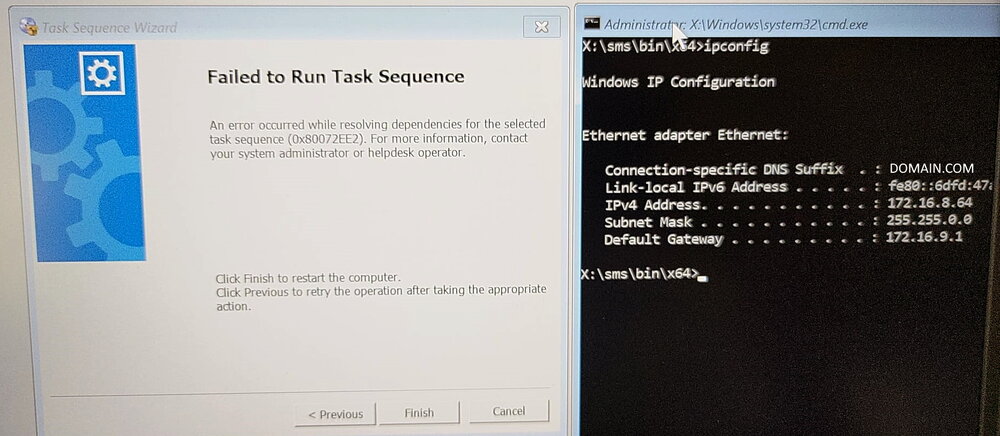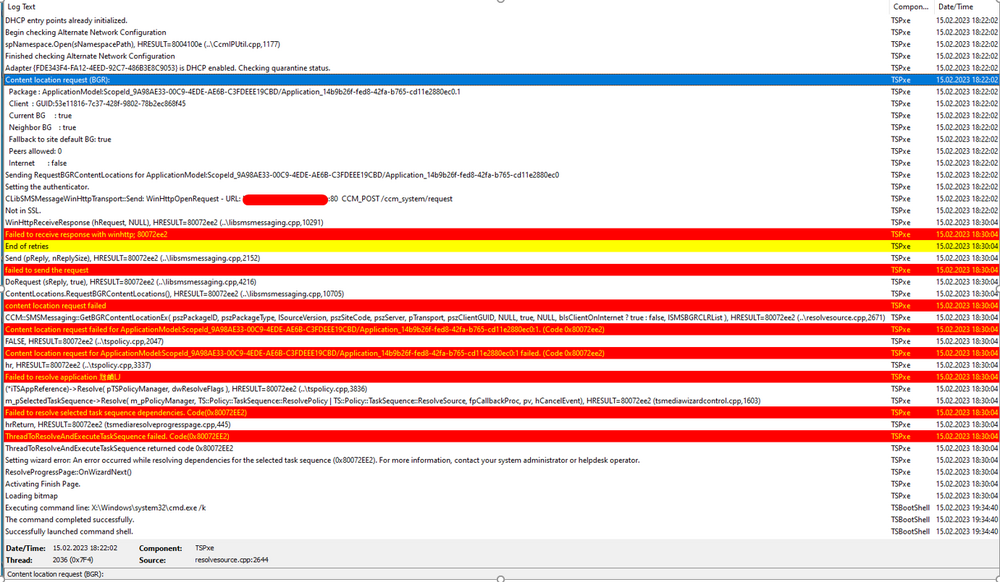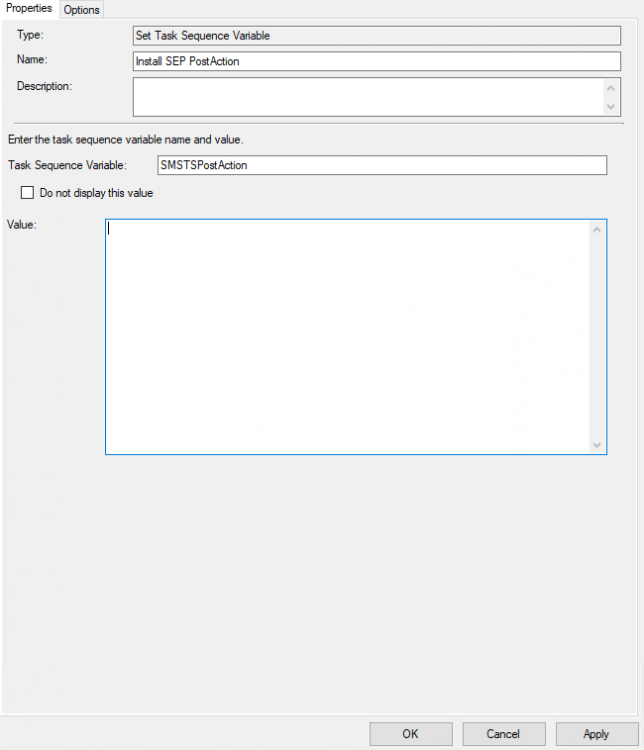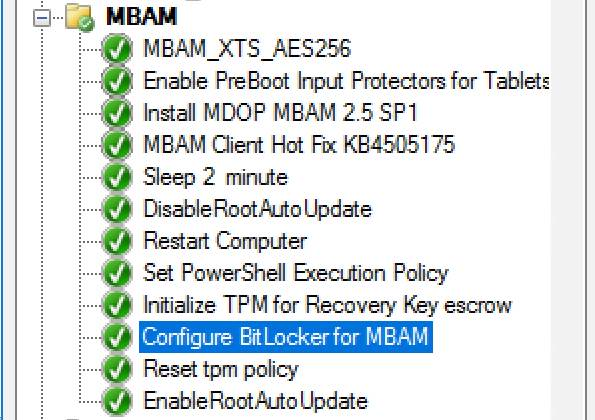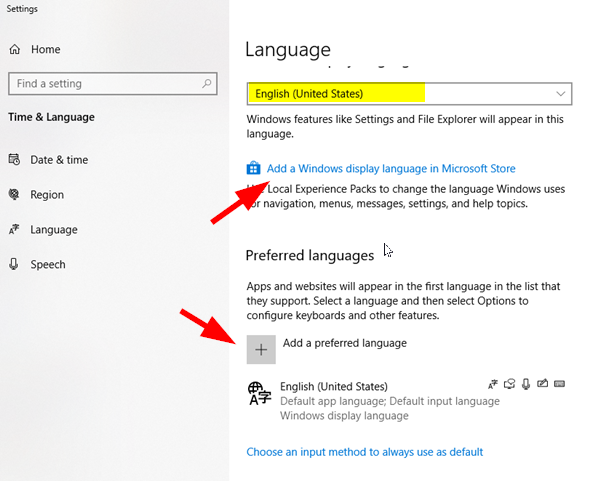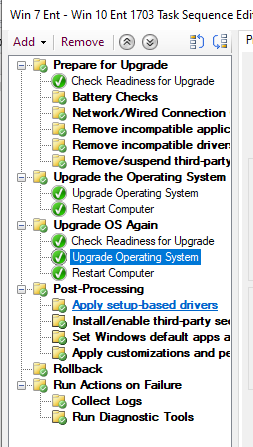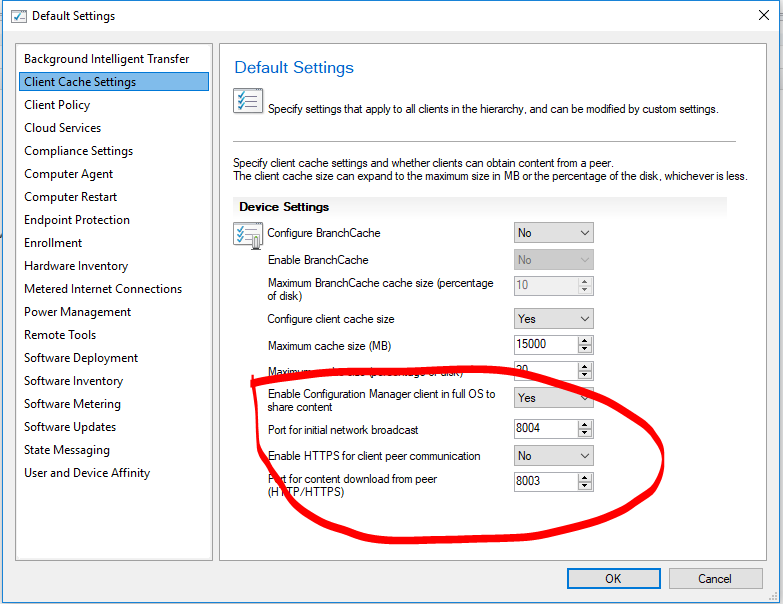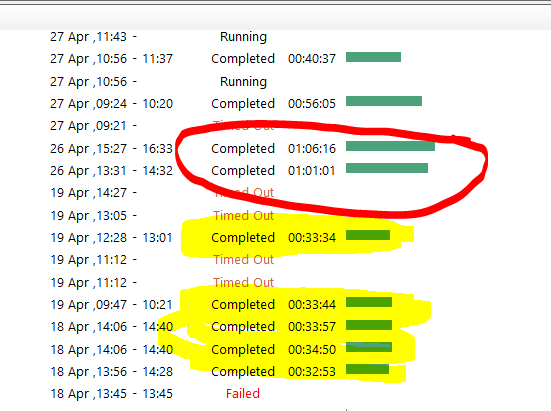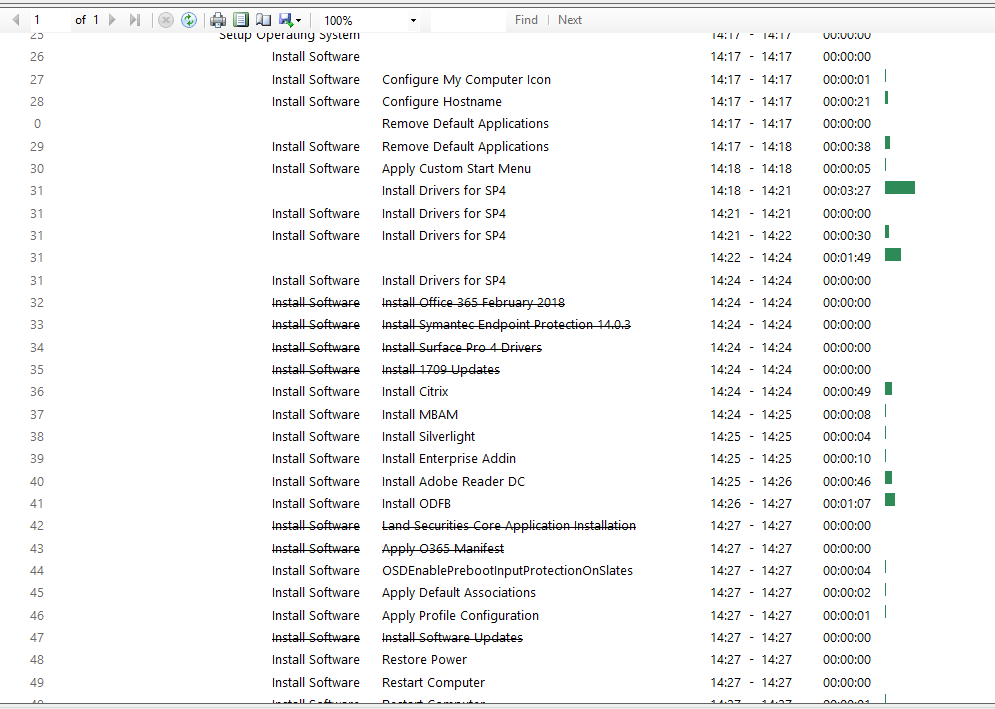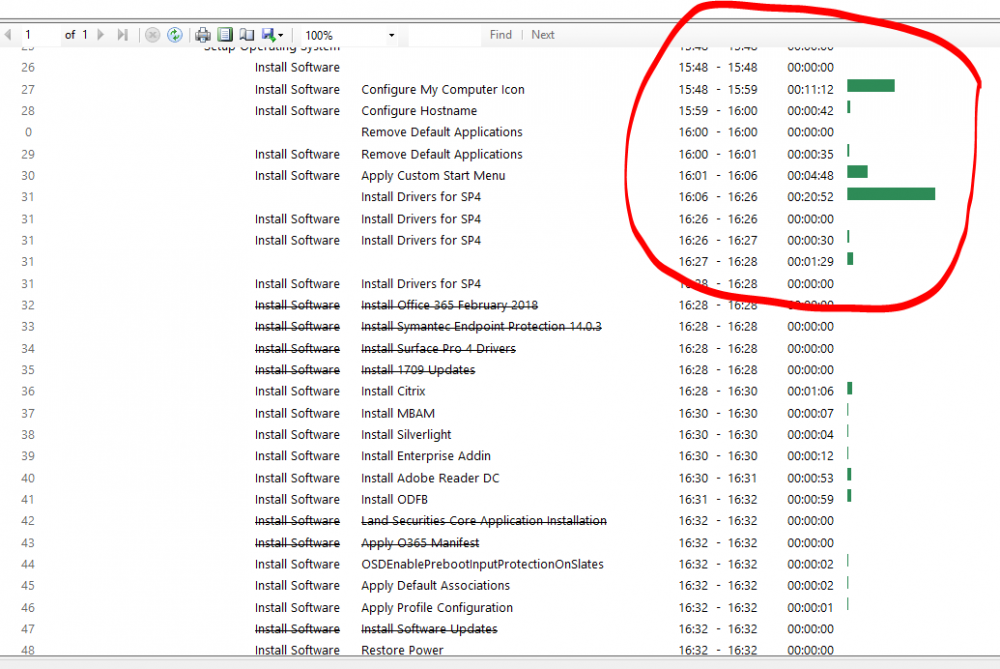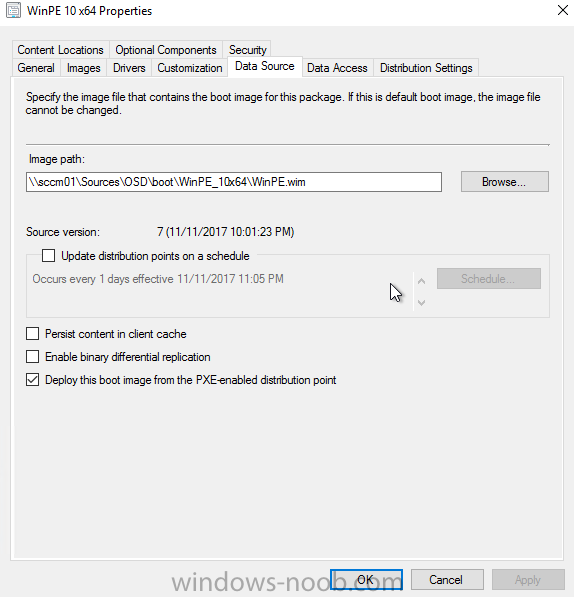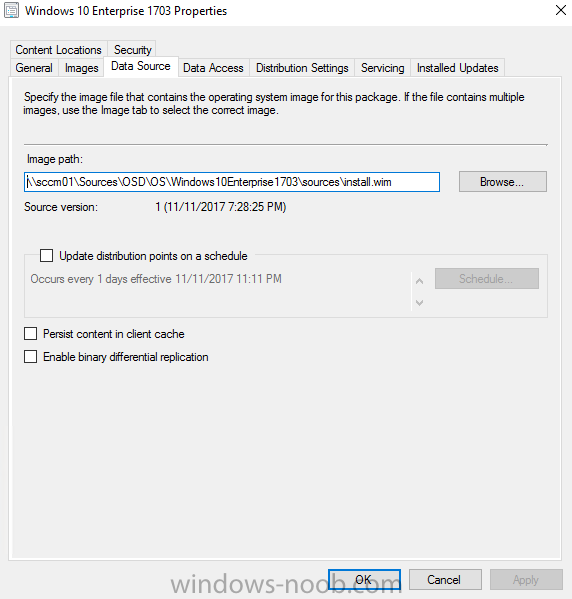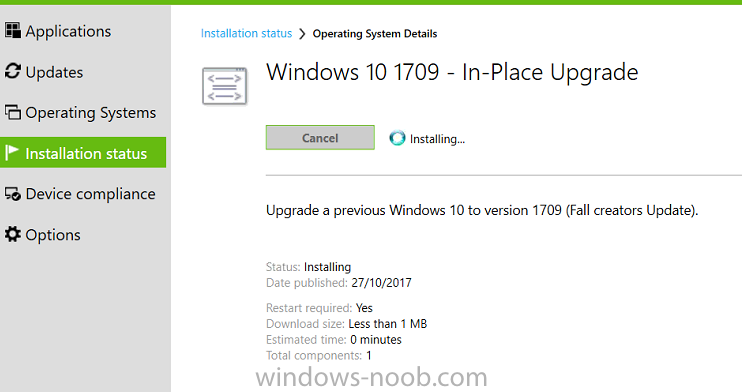Search the Community
Showing results for tags 'task sequence'.
-
I have a OSD Task Sequence for Windows 11 22H2 being deployed to new Dell Optiplex 7000's. The Dell's are going to sleep during the "Setup Windows and Configuration Manager" step of the Task sequence. I have checked the "Run as high performance power plan" box in the more options tab, but the PC sti...
- 2 replies
-
- dell
- power management
-
(and 2 more)
Tagged with:
-
I created an offline media of the Windows 20H2, where I have two Windows version options, I'll call version A and version B Version A: is a standard task sequence, which disables the bitlocker, partitions the disk, installs install.wim, installs the configuration manager, restarts, then adds 3...
-
- initialization
- failed
-
(and 6 more)
Tagged with:
-

task sequence [Help] - Powershell script SMSTSPostAction
Deilson Oliveira posted a question in scripting
I need to install Symantec Endpoint Protection, what would the command line be like in powershell where I can call a .ps1 script in a completely hidden and silent way? I did a previous TS that copies the setup64.exe from SEP to "C:\TEMP\" I don't have much knowledge on powerhsell as would...- 5 replies
-
- powershell
- scripting
-
(and 1 more)
Tagged with:
-
HI On a Windows 10 OSD TS, i want ot add the Bitlocker recover Key to Azure for Hybrid Joined devices. How can i achive this from an SCCM TS? Thanks
-
- hybrid azuread join
- task sequence
-
(and 3 more)
Tagged with:
-
I am attempting to create and deploy a single universal OSD task sequence in SCCM (current branch) in my organization and will install and apply the appropriate language(and other regional settings) for the region. I have created the task sequence with steps outlined in the thread below. However, Wi...
- 5 replies
-
- task sequence
- osd
-
(and 4 more)
Tagged with:
-
Guys Been building Windows 10 1709 for about a year all fine... We are starting to build 1809 and all works except the TS/Naming now seems to ignore the Collection Variable 'OSDComputerName' I have both 1709 and 1809 images, both building from the same 'All Unknown Computers'...
- 1 reply
-
- osdcomputername
- task sequence
-
(and 2 more)
Tagged with:
-
I want to build and capture a ref image. Have a "Microsoft .NET Framework 4.7.2" Application Have checked "Allow this application to be installed from install application task sequence action without being deployed" Deployment type: Install: "NDP472-KB4054530-x86-x64-AllOS-ENU.ex...
- 1 reply
-
- task sequence
- 16389
-
(and 1 more)
Tagged with:
-
OSD failing with error 0x80004005. Please help
jockey posted a question in Microsoft Deployment Toolkit (MDT)
Hi all, I was trying to deploy a Task sequence, which I Copied from standard T.S. and made little change and trying to test it before using. This T.S. is to make BIOS system to UEFI system in boot (Dell system) and then install OS. But when I try to implement this its throwing an error code "0... -
I am new to Task Sequence. I am working on a task Sequence to convert BIOS (Legacy) mode systems to UEFI mode systems (Dell Laptops)(SCCM with MDT) . Can some share a task sequence to do so or share your experience to do so. Actually my requirement is to add these steps for PXE OSD win 10 1607 task...
-
My TS OSD used to take around 35-40 minutes to complete. But after enabling Pre-Release in Hierarchy, my TS now takes over 1 hour. It struggles when it gets to packages/applications. This is the changes I made after enabling pre-release Time it takes to complete the TS...
-
- task sequence
- pre release
-
(and 3 more)
Tagged with:
-
I'm trying to create a new .wim capture of an updated Windows 10 1709 (Hyper-V VM). I created capture media w/ SCCM, ran it on NewBuild18v2 (my VM), it reboots, say username and password are wrong and shows defaultuser0 as option - can’t log into it. Administrator is listed, takes password and the...
-
Hello Windows Noob family! I am attempting to a very basic, nothing crazy refresh from windows 8.1 to windows 10 using SCCM with MDT. I am doing a user driven installation with the latest ADK installation. I create a standard User Driven task sequence. Under the capture user state step I have C...
-
Is it safe to import drivers for a newly acquired model while an osd task sequence might be running? I say might be running because our company is a global one and imaging of machines can be going on without my knowledge. Should I wait for our change management window to import new drivers for use...
-
Dear Experts, My Sincere thanks for your extended support and great mentorship with System Center Products I am trying to Perform the Build and Capture and Unable to do getting an error Very Shortly - We are planning to upgrade the Environment from SCCM 2012 SP2 to SCCM CB 1702 (Upgra...
- 8 replies
-
- client installation
- sccm 2012
- (and 5 more)
-
Hello everyone, I'm currently trying to learn about SCCM and deploying Windows 10 using PXE and MDT, however my clients never seem to get to the task sequence part, instead they just reboot when it says "Preparing network connections". I am able to stop the reboot by pressing F8 and it shows I...
- 5 replies
-
- deployment
- pxe
-
(and 2 more)
Tagged with:
-
Hi, I'm testing an Upgrade TS to Win 10 1709. I tested 4 devices now. On devices, all was working fine. Update was successful. On other two devices, the OS upgrade was successful, but after the OS boots again the TS doesn't complete successfully. I have two batch files in the Pos...
- 10 replies
-
- task sequence
- windows 10
-
(and 2 more)
Tagged with:
-
Hey Guys / Niall - I'm in a bind and need some suggestions, please... I'm currently in the middle of rebuilding our OSD task sequence from scratch to resolve a few issues. It's TS is fairly lengthy as it's MDT integrated and uses the UDI Wizard for customization of the build. One of the...
- 1 reply
-
- osd
- task sequence
-
(and 2 more)
Tagged with:
-
Domain join fails for a single model
blind3d posted a question in Deploy software, applications and drivers
Helloy guys, I'm experiencing a very strange behaviour in SCCM OS deployment... my task sequence seems to work fine for all laptops, desktops, tablets etc. except for one laptop model (Deployment for Lenovo E570 - Win 7 OS). I assume that there is a driver issue ,but I simply can't solve i...- 2 replies
-
- driver package
- domain join
-
(and 1 more)
Tagged with:
-
Hi everyone. I'm hoping someone out there can assist. Sorry for the length post but my aim is to provide as much information as possible to eliminate any of the common gotchas. ConfigMgr is 1702 with latest Hotfix I've spent the better part of two weeks trying to figure out why OSD has all...
- 7 replies
-
- no task sequences available
- task sequences
-
(and 4 more)
Tagged with:
-
Hi, I've been having problems with an install for a looong time. I need to install the latest Salesforce plugin for outlook on my companies computer but many different versions are installed which I need to uninstall prior to installing the newer version.To do so, I have found a Powershell script th...
- 4 replies
-
- task sequence
- powershell
-
(and 2 more)
Tagged with:


